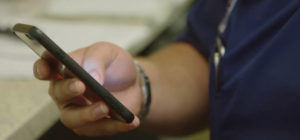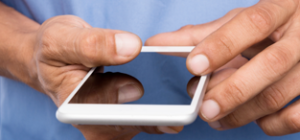Too often, the reflex response to communication problems in hospitals is to add more touchpoints—more devices, more apps, more pagers, more services, more everything.
But in practice, this so-called “utility belt syndrome” is more harmful than helpful. When you have so many different ways to be reached during a shift, who knows how many channels you have to check? This surround-sound of tools takes you away from the bedside. If someone wants to reach you, they might try a unit secretary, call your personal device, work phone, email or any number of other techniques.
By the time you see those messages, you’ve got dozens of pings from multiple places. How do you know which of them are most current and urgent, and which are outdated and less pressing? What if you miss something?
The Risks of Tool Overload
Therein lies the problem of device overload, and it comes with steep risks: Roughly 1 in 3 malpractice cases is caused by a medical communication breakdown, according to a study from CRICO Strategies that linked such mistakes to 1,700 deaths and $1.7 billion in malpractice costs.
As administrators reckon with these growing problems amidst the move to value-based care, they’re finding the need to consolidate fragmented streams of beeps, buzzes, rings and alerts into a leaner mobility strategy and with it, a one-stop system that cuts the confusion of disconnected tools, establishes a primary method of contact, makes collaboration more portable and mitigates the risk of clinician burnout.
But implementing a single-device solution is just half the battle—you still have to get everyone to use it, after all.
Start With Culture—Workflows Will Follow
Many users will likely find the transition to a single app on a single device quite easy, especially if the device is one they’re already using in their personal life. However, because of the high stakes of patient care, some employees may be reluctant to abandon outmoded technology in favor of a more effective tool.
This should not be discouraging. Focus on providing comprehensive, quality education and training to users so they can ease into using it. Offer hands-on training classes, information session and visual literature to cover all of the capabilities in a clear, simple way.
For lasting change that prioritizes the single-device solution as the primary mode of communication, start with the culture and let the workflows follow from there. These tips may help:
1. Get team buy-in
Sit down with clinical, and ancillary staff to understand how communication pain points and breakdowns affect all aspects of their workflows. Encourage open, positive dialogue about what they would and wouldn’t like to see in a new technology.
Having the team’s full buy-in is paramount—if they feel part of the process, they’re much more likely to adopt the new direction and encourage colleagues to as well.
2. Codify and cultivate the new process
Having comprehensive guidelines and protocols in place helps institutionalize a more efficient communication process.
For starters, create protocols surrounding best practices—such as when to text versus call versus video chat—and how to leverage dynamic roles and custom status to make colleagues as reachable as possible. Make sure to account for pertinent scenarios, like what to do if a patient codes or how to handle unit-to-unit transfers, so that your users are confident about communication methods and workflows.
3. Create an engagement task force
Once the single-source tool is in motion, keep an eye on the usage data, which tells an important story. Luckily, MH-CURE’s CURE Analytics™ makes data mining easier than ever by helping systems uncover bottlenecks, broken workflows, disparities and other trends that can help everyone use the platform to its fullest potential.
Take advantage of that value-add by organizing a small group of stakeholders who periodically review insights and share learnings. Many positive gains can come as a result, from new communication guidelines, protocols and trainings to understanding how teams do and don’t work together overall.
4. Foster shared accountability
Most importantly, foster a culture of shared accountability with an all-hands-on-deck mantra that favors quality of communication tools over the quantity of them. When everyone feels like their adoption of those tools makes a positive difference in the Environment of Care, it’s much more likely to improve adoption rates enterprise-wide.
In turn, those enhanced adoption rates will make the solution ever more valuable, too—without the need to throw yet another device at the problem.
For a comprehensive look at implementing a solution like this, download our free white paper.





